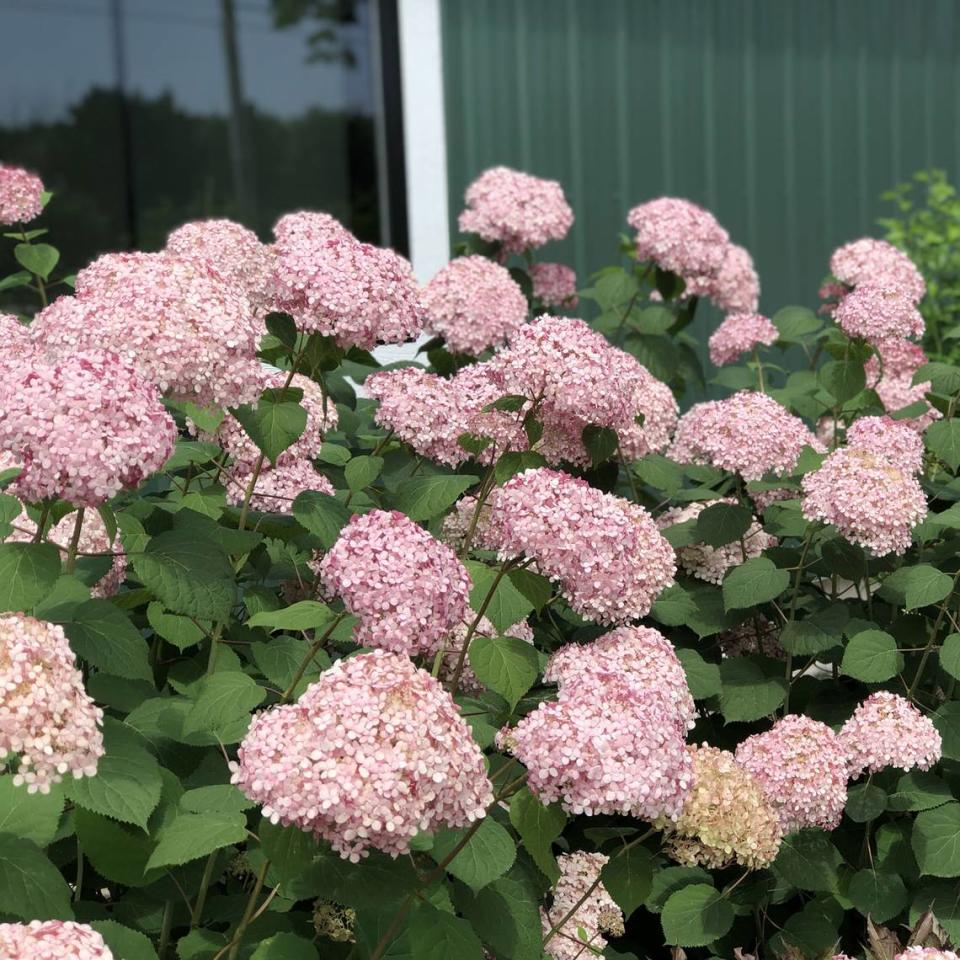Popular hydrangeas come in varieties to suit all gardening personalities
The end of August is the time to pick up fallen fruit, harvest ripe vegetables, dead head flowers and keep your eyes open for any weeds that have evaded your summer weeding sessions and are now going to flower and seed.
Hydrangeas have been getting a lot of likes on my social media and I give credit to all the new and improved hydrangea varieties now at local nurseries. Hydrangeas love our Western Washington climate and there are now hydrangeas for full sun, deep shade, hydrangeas that do not need any pruning, hydrangeas that stay white when they bloom, hydrangeas that stay pink when they bloom and hydrangeas that change color when they bloom.
Growing beyond your grandmother’s hydrangea with the big blue balls of bloom (that would be the traditional hydrangea macrophylla), let me suggest a few more hydrangea varieties for the adventurous gardener.
For the lazy gardener
Pee Gee Hydrangeas (Hydrangea paniculata) in varieties such as Bobo, Fire Light, Limelight and Little Lamb.
These are the hydrangeas with pointy blooms that change color from white or green to cream, pink and finally russet as their flowers age. They take full sun in our climate and can be trained into tree form. I post images on social media of my tree pruned Pee Gee hydrangea every August as it is one of most spectacular and easiest to grow shrubs in my garden.
For the demanding gardener
Oakleaf Hydrangea (Hydrangea quercifolia) in varieties such as Gatsby Gal, Gatsby Pink and Gatsby Star.
This is the hydrangea with four seasons of interest. The leaves are shaped like those on an oak tree and they turn red in the fall, have big showy white flowers in summer and peeling bark in winter. Spring brings apple green new growth.
In my garden, the oakleaf hydrangea handles drought without wilting like my other hydrangeas and thrives in the shade or sun. I am disappointed with the fall color of the foliage, however. In our climate, the leaves do not turn as brilliant red as they do when this plant is grown on the East Coast.
For the smaller garden or colder areas
Mountain hydrangeas (Hydrangea serrata) in varieties such as Tuff Stuff Red, Tiny Tuff Stuff and Tuff Stuff Lacecap.
Very cold tolerant and reblooming, these have elegant lacecap flowers and the compact variety called “Tuff Stuff” blooms in pink or blue with a petite framework that keeps them around 3 feet tall and as wide. The lacecap flowers attract pollinators and the compact size makes them great for the back of a flower border.
For the collector with a flair for drama
Smooth Hydrangea (Hydrangea arborescens) varieties include Incrediball, Lime Rickey, Invincibelle Mini Mauvette, Invincibelle Wee White and Invincibelle Limetta.
The much loved “Annabelle” hydrangea started the fad for this easy care, cold tolerant hydrangea with the huge blooms; the newer varieties come in dwarf forms in pink or white. The most spectacular blooms belong to “Incrediball” with round white flowers the size of basketballs on sturdy stems. To get the most out of these hydrangeas plant in full sun, prune back the stems by about one half in early spring (do not cut all the way to the ground) and please do not over fertilize.
For the patient gardener
Climbing hydrangea (Hydrangea anomala)
This slow-growing hydrangea will climb up tree trunks or walls with tiny clinging roots, and if you are lucky, it could bloom after 4 to 7 years of care. I am still waiting for mine to flower so I won’t sing the praises of this unusual vine just yet. I’ll get back to you in a few more years.
Marianne Binetti has a degree in horticulture from Washington State University and is the author of several books. Reach her at binettigarden.com.




